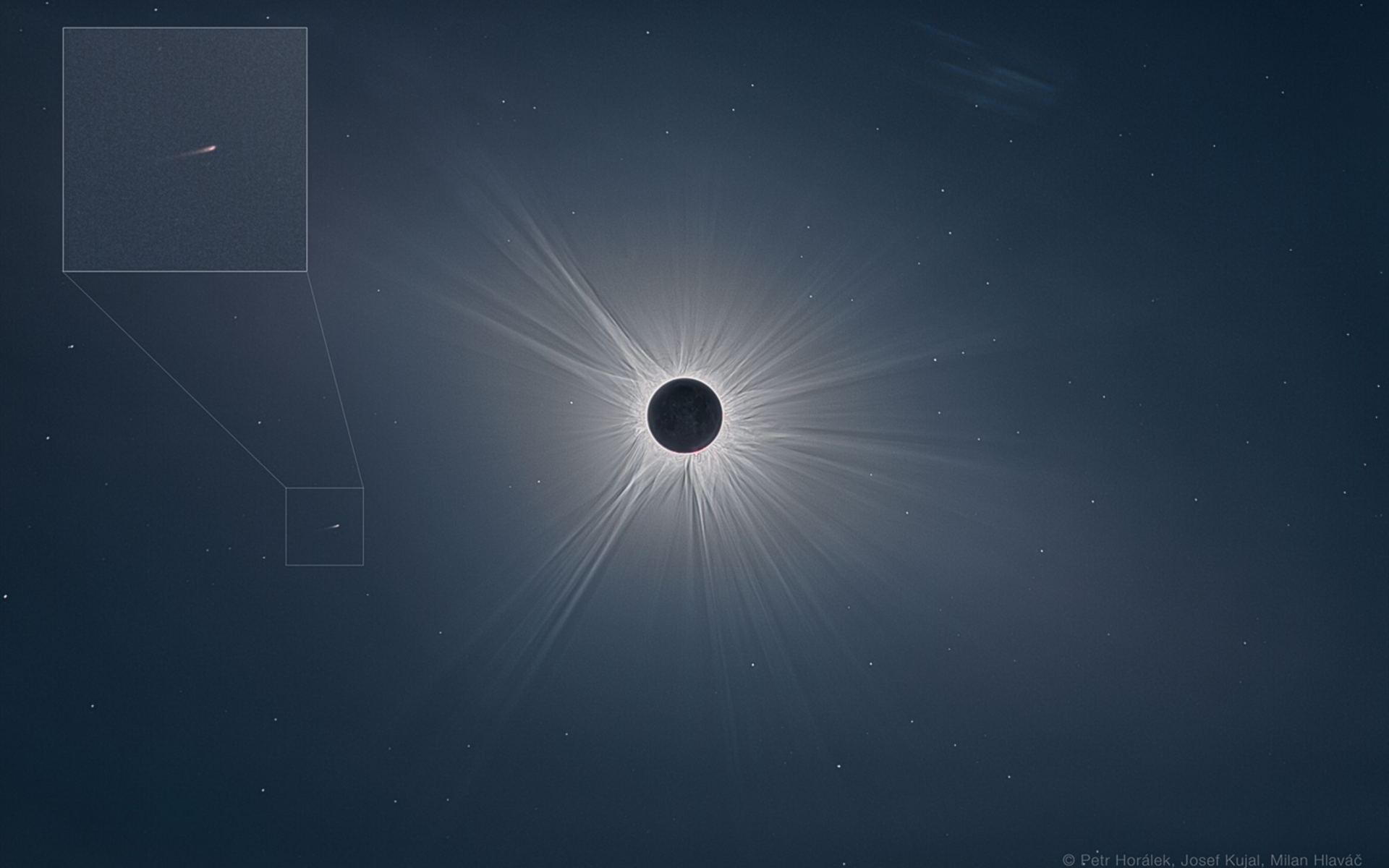A surprise appearance of a new comet made the April 8th total solar eclipse all the more memorable.
Any dedicated ‘umbraphile’ will tell you: no two eclipses are exactly the same. Weather, solar activity, and the just plain expeditionary nature of reaching and standing in the shadow of the Moon for those brief moments during totality assures a unique experience, every time out. The same can be said for catching a brief glimpse of what’s going on near the Sun, from prominences and the pearly white corona to the configuration of bright planets… and just maybe, a new comet.
The Discovery
While many planned to try and spy periodic Comet 12P Pons-Brooks during totality, astronomer Karl Battams at the U.S. Naval Research Laboratory alerted us to another possibility. A new sungrazing comet, spotted just hours prior. The Kreutz family comet was seen by Worachate Boonplod in the field of view of the joint NASA/ESA Solar Heliospheric Observatory’s (SOHO) LASCO C3 and C2 imagers. These are equipped with Sun-covering coronagraphs that allow it to see the near solar environment. The mission was launched over a quarter of a century ago in 1995. SOHO was deployed to the sunward L1 Earth-Sun Lagrange point nearly a million miles distant. SOHO has since proven itself to be a crucial workhorse in solar heliophysics.

The comet soon received the formal designation of SOHO-5008. That’s right: SOHO has led to the discovery of over 5,000 comets in its career. Most of these discoveries were thanks to the efforts of dedicated online sleuths, scouring recent LASCO images.
At the time, the doom’d comet was a faint object, located only a few degrees from the Sun. The icy interloper was a tough target to nab during the fleeting minutes of totality, but at least two dedicated astrophotographers managed to catch it. Lin Zixuan saw it imaging from northern New Hampshire. Petr Horálek from the Institute of Physics in Opava Czechia (Czech Republic) was imaging from Mexico as he caught the object.
Like so many other sungrazers, the comet met its demise shortly after discovery (less than 12 hours, in fact), like a sundiving spaceship at a Disaster Area concert right out of Douglas Adam’s Hitchhiker’s Guide to the Galaxy.
A Brief History of Sungrazers
This sort of SOHO versus comet, versus eclipse discovery has only occurred twice: once in 2008 and again in 2020). SOHO wasn’t designed per se to find comets, but its prolific nature as a comet hunter has become an essential part of the legacy of the mission. SOHO has defined whole new families of Kreutz, Marsden and Kracht sungrazing comets. And to think, prior to the mission, only sixteen sungrazing comets were even known of.
One similar case was the Great Comet of 1948, which was also discovered by stunned observers during a total solar eclipse. Another was C/1965 Ikeya-Seki, which went on to become one of the truly great comets of the 20th century. More recently, C/2011 W3 Lovejoy surprised everyone by surviving its perihelion passage 140,000 kilometers from the surface of the Sun. Just one year later, however, 2012 S1 ISON didn’t.
It was a thrilling celestial spectacle, with an added treat.

